Sr. Lecturer
University of Massachusetts Amherst, Physics Department
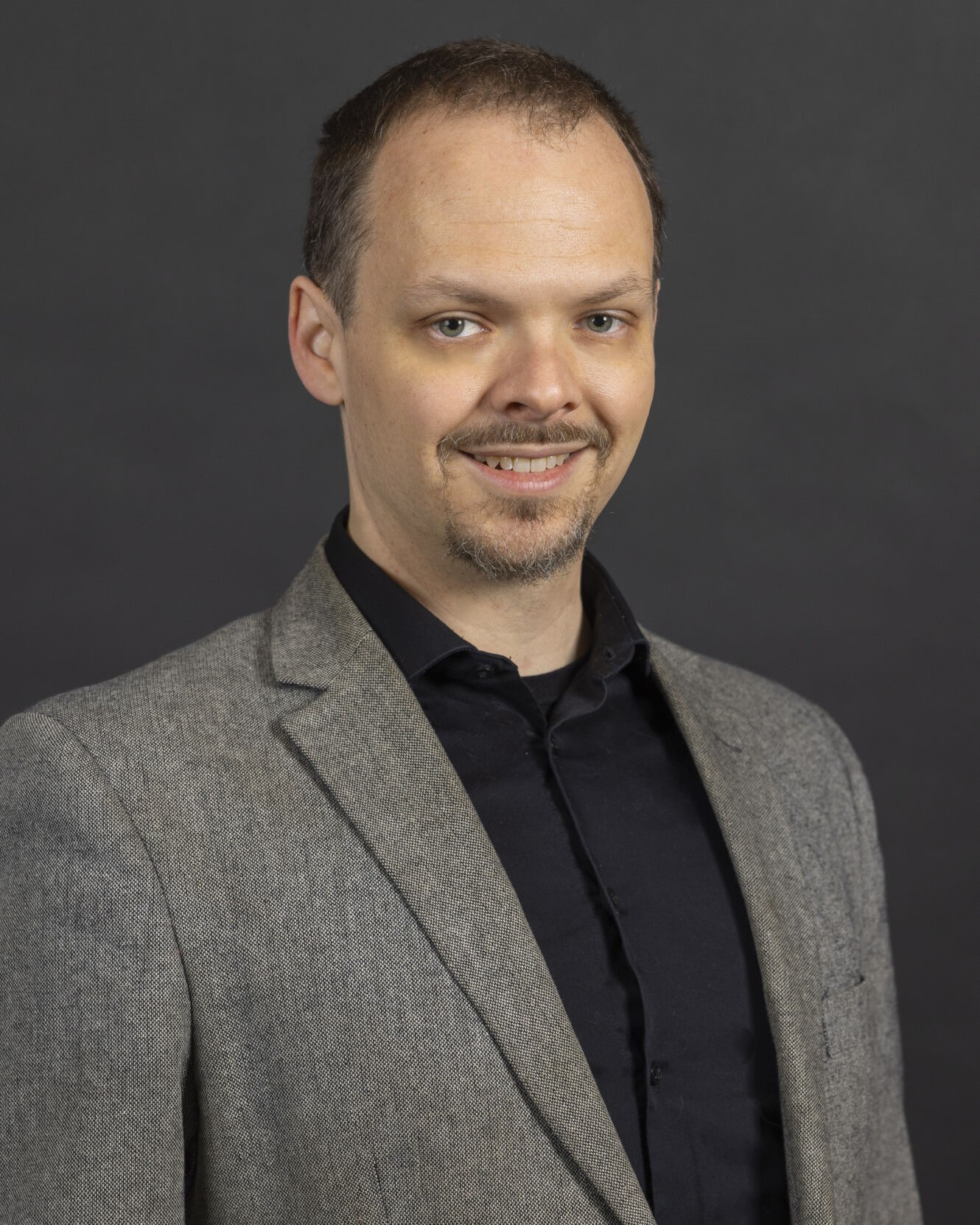
University of Massachusetts Amherst, Physics Department
University of Massachusetts Amherst, Physics Department
University of Arizona, Physics Department
Ph.D. in Physics
University of California, Irvine
Bachelor of Science in Physics
University of Arizona

Featured on the new UMass website under Academics → Undergraduate Programs with a video on Creating an Inclusive Classroom
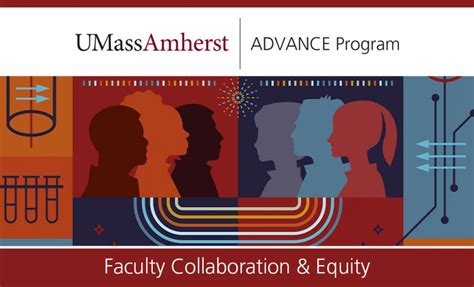
A UMass ADVANCE Faculty Fellowship provides faculty members with a unique opportunity to participate in ADVANCE’s program of institutional transformation. Fellows partner with the ADVANCE Leadership Team as we provide the resources, recognition and relationship building necessary to help faculty collaborate successfully and feel valued and included. Fellows provide recommendations and feedback to the team about ADVANCE programming, and they liaise with their departments and promote our efforts.

The Physics Department Nominee for The Manning Prize for Excellence in Teaching. This prize honors one outstanding faculty member from each of the five campuses of the University of Massachusetts. Now in its third year, this competitive prize is presented to faculty members who demonstrate excellence in teaching along with exemplary dedication to students and the campus community.

Honoring individual excellence, the campus-wide Distinguished Teaching Award is highly competitive and prestigious. Only current students and alumni may nominate faculty for this award. Each year faculty, graduate, and undergraduate student committees review more than 100 nominations in a two-step process of data collection and analysis prior to selecting three faculty and two teaching assistant awardees.

The Physics Department Nominee for The Manning Prize for Excellence in Teaching. This prize honors one outstanding faculty member from each of the five campuses of the University of Massachusetts. Now in its third year, this competitive prize is presented to faculty members who demonstrate excellence in teaching along with exemplary dedication to students and the campus community.

The Physics Department Nominee for The College of Natural Science Outstanding Teaching Award. Recognizes excellence in teaching and honors faculty for their teaching accomplishments. The basis for the CNS Outstanding Teaching Award is broader than those typically applied for the University’s Distinguished Teaching Award, in that contributions to graduate education or undergraduate independent study could be the basis for recognition. The CNS Outstanding Teaching Award program is administered by the College and the Provost's Office, using guidelines established by The Center for Teaching and Learning.

The Physics Department Nominee for The Manning Prize for Excellence in Teaching. This prize honors one outstanding faculty member from each of the five campuses of the University of Massachusetts. Now in its third year, this competitive prize is presented to faculty members who demonstrate excellence in teaching along with exemplary dedication to students and the campus community.

Honoring individual excellence, the campus-wide Distinguished Teaching Award is highly competitive and prestigious. Only current students and alumni may nominate faculty for this award. Each year faculty, graduate, and undergraduate student committees review more than 100 nominations in a two-step process of data collection and analysis prior to selecting three faculty and two teaching assistant awardees.

Leading member of a team awarded a $6000 Mutual Mentoring team grant from the institute for Teaching Excellence and Faculty Development (TEFD) at UMass Amherst for a project titled "Integrated Introductory Life-Science Education." The goal of the project is to facilitate collaboration with faculty across the introductory life-science sequence: introductory biology, general and organic chemistry, calculus for life-science students, and introductory physics for life-science students. The aim of the collaboration is to develop a clear picture of the topics and goals of each course and investigate ways that the courses could be structured to facilitate transfer and interdisciplinary thinking.

A $2,500 grant from the UMass, Amherst W.E.B du Bois Libraries to extend our work on our custom Physics 131 textbook Physics 131: Forces, Energy, Entropy through the creation of a second volume for Physics 132 What is Light? What is an Electron? with the goal of having a textbook ready for the Fall 2018 semester. As with Physics 131: Forces, Energy, Entropy, the book will be based upon the OpenStax: College Physics and videos hosted on my course YouTube channel

Honoring individual excellence, the campus-wide Distinguished Teaching Award is highly competitive and prestigious. Only current students and alumni may nominate faculty for this award. Each year faculty, graduate, and undergraduate student committees review more than 100 nominations in a two-step process of data collection and analysis prior to selecting three faculty and two teaching assistant awardees.

Honoring individual excellence, the campus-wide Distinguished Teaching Award is highly competitive and prestigious. Only current students and alumni may nominate faculty for this award. Each year faculty, graduate, and undergraduate student committees review more than 100 nominations in a two-step process of data collection and analysis prior to selecting three faculty and two teaching assistant awardees.
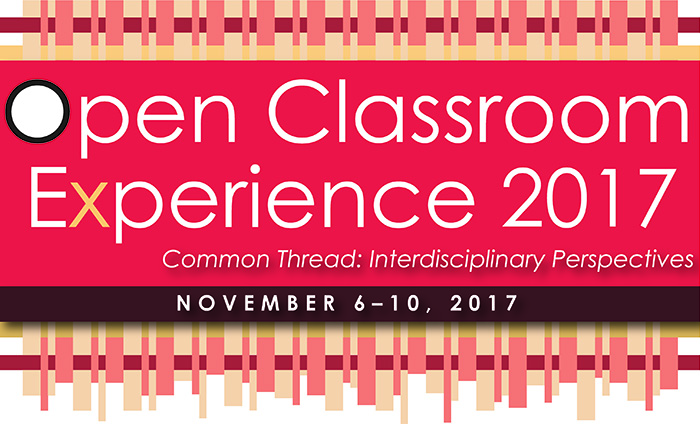
Participated in an inaugural extended version of the open classroom days. Through this process faculty open their course for visits by other faculty. Such an exchange provides an opportunity to observe how different faculty address similar instructional challenges as well as an opportunity to get feedback on one's own class.
I opened a total of six sections of my course to visitors and observed BIOLOGY 190H - 01: Quantitative Biology of the Cell which is an honors introductory biology course taught in a team-based learning style.

UMass-Amherst campus winner of the "Of The Month Award" for September.
Nomination: Through his teaching of Physics, he expresses his love and passion for science and the many ways it is changing the world. Sometimes in a big lecture class, it starts to feel like there is less of a connection with the professor, but Professor Toggerson tries his hardest to learn the name of each member of the class and to make the class an interactive experience. Even though team- based learning classes are often disliked by many, Physics is interesting due to the team aspects that lead to a better understanding of many difficult topics. I look forward to attending the class three times a week due to the intriguing demonstrations and collaborative activities. When we complete team projects, Professor Toggerson plays an active role in assisting the class with anything that may come up. He is always prepared for class and his positive attitude makes the class more enjoyable overall. I appreciate how much he cares about his students both in and out of the classroom. He also sent out an email in which he provided academic resources and more importantly mental health resources on campus. These issues are often overlooked by many and Professor Toggerson cares for the well being of his students. Overall, I think Professor Toggerson is a tremendously hardworking person and I think that he should be recognized for the awesome job he does each day.

One of the inaugural winners of the UMass-Amherst College of Natural Sciences Lecturer's Professional Development Fund Award. Awarded $1550 to present our work on the development of P131 and P132 at the Summer 2018 AAPT Meeting.

A $1000 award from the Massachusetts Society of Professors to pay for Jake Shechter's travel to the AAPT Summer 2018 Meeting in Washington D.C. to present our work in developing a first-year graduate-student seminar on professional development and TA training.

A $500 award from the Massachusetts Society of Professors for equipment necessary to create the needed videos to flip P132.

A $1500 grant from the UMass, Amherst Institute for Teaching Excellence and Faculty Development.
TIDE Ambassadors explore how they can enhance students’ learning and academic success across cultural, social, and learning differences by adopting a strength-based, inclusive, and equitable approach to teaching and learning grounded in the value of diversity. The program acknowledges the potential of faculty functioning as catalysts for change through intensive professional development of faculty across disciplines and career stages.
TIDE Ambassadors take what they learn from their experiences with the fellowship program and develop a project through which they share their growing expertise and contribute to the dialogue about and practice of teaching for inclusiveness, diversity, and equity at the departmental, school/college, or campus-wide levels.
While white cis-gendered men are actually not a majority in my physics 131 and 132 courses, they do volunteer to contribute more to class discussions than other groups. Moreover, I have definitely observed, both as a practicing physicist and as a physics instructor in a team-based learning (TBL) environment, an undervaluing of the contributions of minority groups. As part of this fellowship, I wanted to explore ways to minimize and mitigate these effects.
Another topic I wanted to explore is equity with regard to disability particularly in my TBL courses. Many of the suggestions and accommodation requests from our Disability Services offce are tailored to a typical lecture-style course and do not really apply to TBL. For example, a common accommodation is to provide notes before class. However, in a TBL environment, there is only a small amount of lecture and students are spending over half of the class-time working on problems in teams. What accommodations are needed for this environment? How can I structure the course in a way that uses the principles of universal design and minimizes the need for accommodations?
Finally, the issue of diversity came up several times in the first iteration of physics 390T. As part of that course, we discuss issues such as stereotype threat and soloing with regards to team formation and dynamics within a TBL classroom. The format of these discussions stemmed from readings from the physics education literature. Some students reacted to these ideas with skepticism. Through this fellowship, I learned new ways of exploring these ideas and facilitating better discussions with my students.
More information on this program can be found at http://www.umass.edu/tefd/tide-ambassadors-program
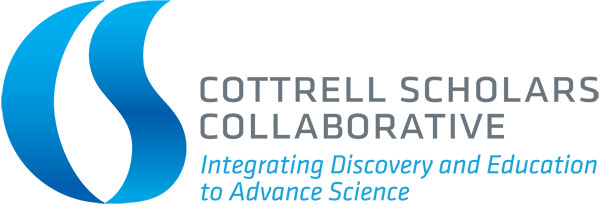
The workshop, “Mobilizing the Forgotten Army: Preparing TAs for Leadership in STEM Education” (sponsored by the National Science Foundation and the Research Corporation for Science Advancement) offers the opportunity for a small group of departmental teams to interact with colleagues who have expertise in supporting physics and chemistry GTAs. The workshop is designed for departmental teams consisting of one “mentor/master” TA and one faculty member.

Honoring individual excellence, the campus-wide Distinguished Teaching Award is highly competitive and prestigious. Only current students and alumni may nominate faculty for this award. Each year faculty, graduate, and undergraduate student committees review more than 100 nominations in a two-step process of data collection and analysis prior to selecting three faculty and two teaching assistant awardees.
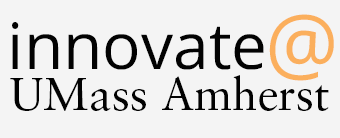
$500 Award
Innovation Fellows are faculty who participate in the Innovate@ Symposia that are offered throughout the year. Launched in summer 2016, these symposia are unique workshops that allow faculty to explore different ways of using a wide spectrum of instructional tools and then plan a targeted implementation during the academic year. Faculty then become part of the Innovation Fellow think tank and are the front line for discussing new instructional innovations and for creating a roadmap for sustainable innovations at UMass Amherst. These faculty are also willing to be contacted by faculty throughout the year to talk about instructional technologies and to promote their use in teaching and research.
My innovation is using social media tools such as twitter to provide an additional way for students to engage with large lecture classes.
More on the symposium, and my engagement with it can be found at https://innovate.umass.edu/brokk-toggerson-lecturer-physics/

A $2500 grant from the UMass, Amherst W.E.B du Bois Libraries to develop free-to-student materials for use in Physics 131. In order to reduce costs for students, I will be using the OpenStax College Physics textbook as our primary resource. This text is supplemented with my own instructional videos which are hosted on our course YouTube channel.
These funds are being used to pay for part of an undergraduate student's summer salary to organize our resources a more user-friendly way for the students and future instructors.

A $500 award from the Massachusetts Society of Professors to further contribute to the salary of a summer student to organize free-to-student resources and to help analyze data from the past semester of Physics 131.

One of 19 faculty at UMass who participated in an campus-wide "open house" during which others were invited to come and observe their colleagues teach. I opened up all four sections to observers. This provided a great opportunity for feedback from colleagues across campus.

A $1500 fellowship focusing on active, collaborative, and innovative pedagogies. Fellows engage in a variety of initiatives to assist with course design, technology familiarity, and assignment development. Upon completion, fellows receive a certificate of Team-Based Learning qualification.

Nominated as part of the AAU Collaborative Learning Spaces team for the University of Arizona 2015 Team Award for Excellence which recognizes a team of employees whose outstanding achievements benefit all or a large part of the University. Although ultimately our team was not selected as a recipient, we were publicly acknowledged for many contributions to the University community.

Selected by students and faculty for distinguished undergraduate teaching for the 2014-2015 academic year.

Campus-wide monetary award to acknowledge STEM faculty who have implemented active learning instructional strategies that are proven more effective than traditional lectures. One award given each semester in 2014-2015 academic year.
Read more in the Arizona Daily Star

Selected by students and faculty for distinguished undergraduate teaching for the 2013-2014 academic year.
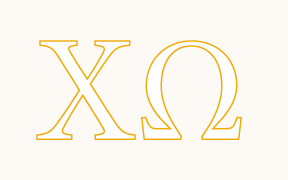
Selected by members of the University of Arizona chapter of the Chi Omega sorority in recognition of excellent teaching and mentoring.
While course development is my primary activity, I am also a founding member of multiple collaborations to support research-based physics education, particularly of life-science students.
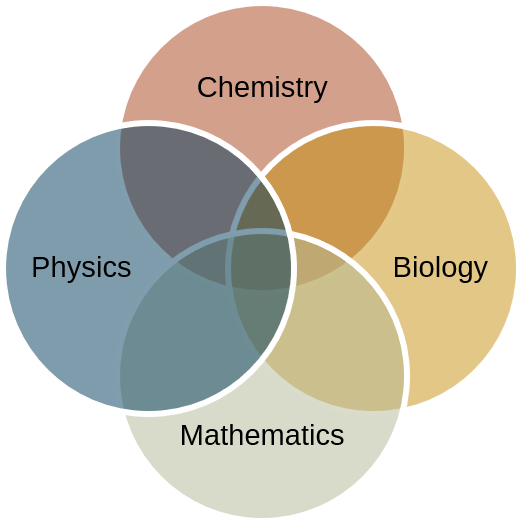
A collection of Lecturers from Biology, Chemistry, Mathematics, and Physics responsible for teaching key courses in the introductory sequence for all life science majors initially supported by a Mutual Mentoring Grant. The current courses on which we are focusing are:
The group aims to understand the connections and relationships between these courses and to facilitate interdisciplinary thinking through the construction of modules that explicitly connect content across courses.
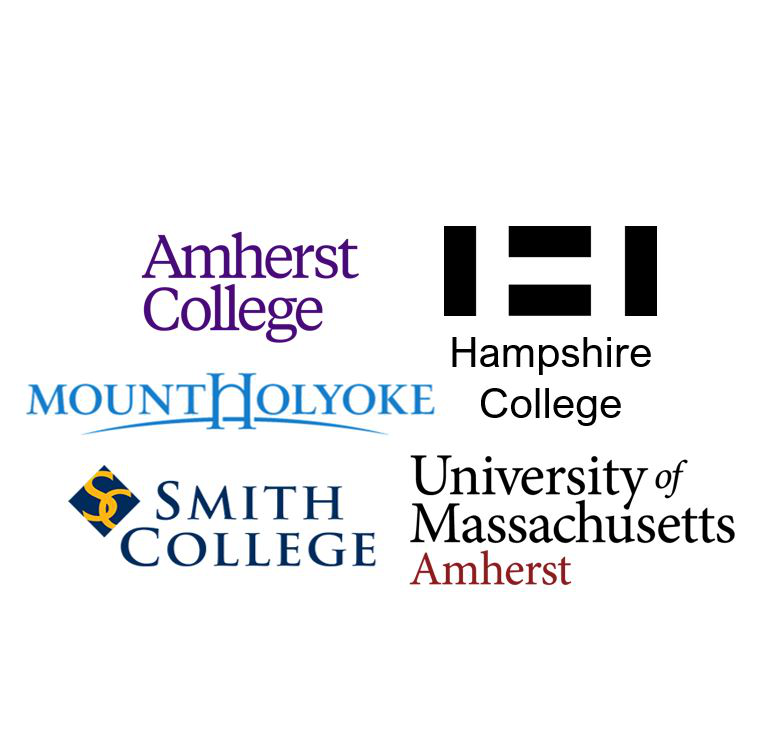
Each of the five colleges in our area has a unique character which results in a diversity of student populations and educational environments. Discussions of pedagogy and research inherently benefit from these diverse perspectives. The forum also serves as a resource for conducting our own research.
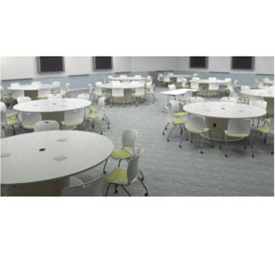
Since Fall 2015, Physics 131 has been taught in an exclusively Team-Based Learning mode in a room especially designed for such pedagogies. In this model, students are responsible for learning the fundamentals of the material on-their-own using readings and formative homework before coming to class. Students are then summatively assessed on their preparation with a 10-question multiple choice quiz at the beginning of each of the five units. During class, students work in teams of five to to master more complex ideas, practice problem solving, and complete integrated laboratory activities. All summative assessments, including the beginning-of-unit quizzes and the three exams, are pyramid in structure: students first complete the exam individually and then with their team. The final grade is a combination of the two. At the end of the semester, the students evaluate their teammates' collaboration. This peer-evaluation figures into each student's grade.
The content for Physics 131 covers the three fundamental concepts of physics: forces, energy, and entropy broken down into five units.
More details, and access to course materials, can be found at https://physedgroup.umasscreate.net/course-materials/p131/.
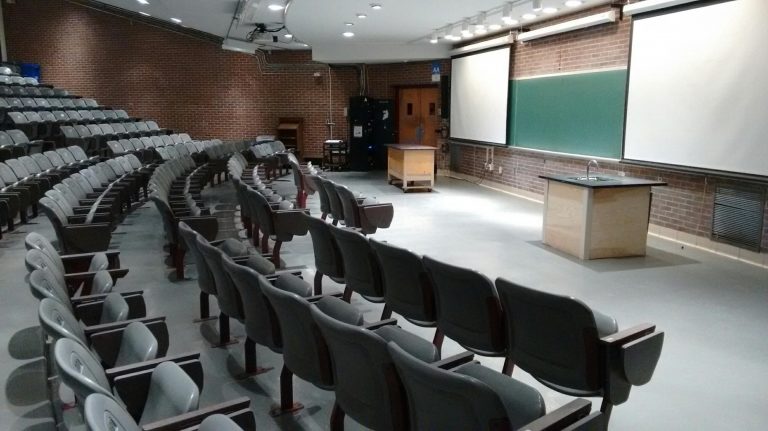
Since Spring 2018, I have been working to implement the same Team-Based-Learning pedagogy in a 300-person lecture hall: a space ill-suited to TBL. The solution has been an opt-in team system: students can elect to be part of an officially organized team or choose to be responsible for organizing their own groups. Another concession to the lecture hall environment is the move from beginning-of-unit quizzes to a single-question quiz at the beginning of each class session. Students are told in advance the content of the question in order that they may be prepared. Knowing that perfect attendance is an unrealistic expectation, a certain number of quizzes are dropped at the end of the semester. To facilitate team cohesion, students on organized teams have a lower number of dropped quizzes (4) than those who are going solo (12). In other regards, the course follows the same TBL pedagogy as 131: students spend class time working collaboratively to solve problems and conceptual questions. Assessment is, as with 131, using pyramid exams.
The content of Physics 132 centers on the two guiding questions: What is an electron? What is light? These questions guide through the entire five units. In addition, each unit has a biologically or chemically authentic question that we address by the end of the unit:
Unlike 131, the lab for 132 is more traditional in that it operates semi-independently from the lecture portion. I have worked with our Director for Undergraduate Laboratories to develop a sequence of labs that focus on data analysis skills with physics simply being the context. The goal is to provide students skills that they can use in their major courses of study.
More details, and access to course materials, can be found at https://physedgroup.umasscreate.net/course-materials/p132-second-semester-ipls/.

Physics 691G is a 1-credit seminar developed in conjunction with some experienced graduate students and with support from the Cottrell Scholars Collaborative National TA Workshop during June 2017. The course was first offered the fall of that year and has been evolving since. The primary goals for this seminar are:
We have shared this course within the UMass community and extensive details are available at https://physedgroup.umasscreate.net/course-materials/graduate-ta-training-seminar/
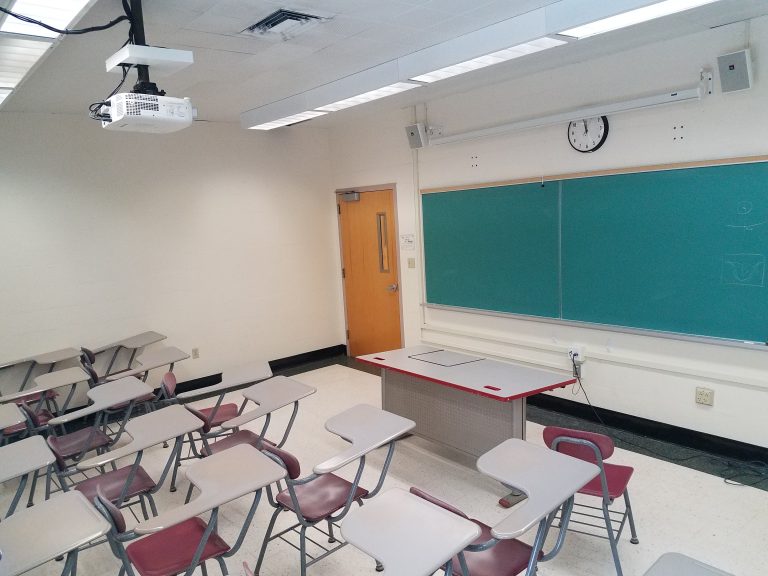
The goal of this course is to provide an introduction to some of the modern researched-based pedagogies used in physics educational research in a theoretical way as well as providing students an opportunity to both observe and practice these techniques in a real classroom as a member of the PHYS 131 instructional team. Students be attending a P131 section, which is taught in a Team-Based Learning (TBL) format, and answering questions of students during the class-time activities. Moreover, students will watch and reflect upon the P131 instructor’s use of modern teaching techniques. There will also be a weekly meeting for students to explore the principles underlying modern pedagogical best-practices. The course is divided into four units, each of which culminates in a project which provide students unique skills or products that they can use in future job applications:
More details on this course are available at https://physedgroup.umasscreate.net/course-materials/phys-390t/ (390T was the name of the experimental version of the course before it earned formal approval.)
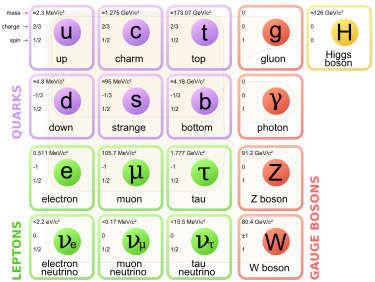
During this two-week particle physics program, motivated high-school students have the opportunity to explore the exciting world of electrons, particles of light, the famous Higgs boson, and more. They learn about the fundamental forces and conservation laws that govern this world of particles, and, by extension, our world. In addition to the underlying physics concepts, participants have a hands-on opportunity to learn about how modern science is done by actually doing it. Participants work in teams analyzing real data from modern particle experiments such as the CMS experiment at CERN as part of a two-week project. In this project, participants will decide what particle to focus on and, as part of a team, figure out how to separate collisions in which your particle is produced from background "look-alike" events. The skills you will develop, such as statistical analysis, are used not only by particle physics, but also by professionals in astronomy, genetics, epidemiology, and the new field of data science.
There are two materials available for this class, please feel free to use either of them with attribution:
My principal responsibility at University of Massachusetts Amherst is teaching Physics 131 and 132: a two-semester introductory physics for life-science (IPLS) sequence populated by second- and third year life-science students. My teaching follows a social constructivist paradgim and a team-based pedagogy with the aim of delivering a learning experience many authentic connections to biology and chemistry throughout.
In addition to teaching IPLS, I have also created two other courses to serve un-met needs in my department. Physics 691G is a semester-long TA-training seminar developed in conjunction with experiened TAs. I have also created Physics 361, an introduction to active-learning in physics education, which is our department’s only course dedicated to the 8% of our majors likely to become teachers.
My course development is enhanced by my own scholarship. I am interested in how different pedagogies and teaching techniques can impact equity in the classroom. My methods are influenced by my background searching for supersymmetry on the ATLAS Experiment at CERN. I use computational tools such as machine learning and natural language processing, leveraging my large class sizes, to gain insights.
More information on all of these projects can be found at The UMass P131 Group Webpage
Across these disparate curricula, my teaching goals go beyond enriching or supplementing these students’ major studies. I strive to provide a space for students to explore diversity of cultures and modes of thinking. Each scientific discipline has its own unique culture. Exploring these differences naturally leads into exploring the broader culture of science as a whole. I am a firm believer that science is an inherently collaborative enterprise and that more diverse collaborations result in stronger science. I therefore in addition to structuring my classes and research around this belief, I have created several groups to facilitate collaboration.
A full teaching philosophy can be found here
Below is a list of all of the students I have advised as well as all the courses I have taught both at UMass, Amherst and at University of Arizona. If you are an instructor or graduate TA, and would like access to my materials, please do not hesitate to contact me.

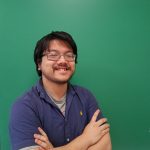
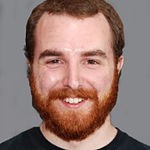
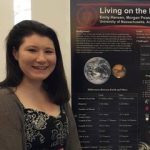


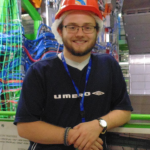
I advise both graduate and undergraduate students with an interest in education. Students work both on developing instructional content such as open-educational textbooks and conducting physics education research. While I will post specific positions on my group's website, if you are in the 5-College system and interested in some physics education experience, please do not hesitate to reach out!
More detailed information on these courses, including sample materials can be found on
the UMass P131 Group webpage
New Course: A required junior-level writing course. One section of 24 students.
Significant Reforms: Converting what had been an remote-only lab into an in-person experience.
Significant Reforms: Implementing in-person online-based exams for the first time.
Significant Reforms: First time as instructor-of-record for the 132 labs. Supervisor of 11 Graduate TAs running 23 lab sections with 28 students each. Revised the lab sequence to include more opportunities for revision of procedures. Also incorporated t-tests.
Significant Reforms: Opportunity to implement the ideas for improvement in the reflection on my fall 2020 remote teaching.
New course: Wrote labs for 15 lab sections of 28 each
Completely overhauled the labs. In line with Introductory physics labs: We can do better, the focus was changed from reinforcing physics content to teaching experimental skills and data analysis techniques.
Significant Reforms: First semester teaching completely remote: a complete reflection on my remote teaching.
Taught remotely for the first time. Discovered a new set of challenges unique to teaching a small seminar online as opposed to a large lecture.
Significant Reforms: Addition of biologically and chemically authentic guiding questions for each unit. First use of the Pressbooks version of the textbook Physics 132: What is an Electron? What is Light? and Edfinity for the homework.
Of course, the transition to remote mid-semester was also significant.
Significant Reforms: Continuing to increase the TBL-nature of the course through different techniques. First use of the custom textbook Physics 131: What is an Electron? What is Light? Lab effort is also ongoing.
Significant Reforms to a Mature Course: Further flipped the course. Much smoother.
Three sections of 100 students. Restructured the first two units of the course to integrate impulse with the other topics on Newton's Laws and graphical analysis. Investigation of the effectiveness of this change is ongoing.
Significant Reforms: Began the effort to convert this course from a lecture-based course to a team-based learning course - a transition made more difficult by the 250 students in each of two sections and the lecture hall which is not conducive to this paradigm. Also, begain an effort with the lab instructors in my department to reform the labs for this course in line with the recommendations in Introductory Physics Labs: We can do Better. (Physics Today, vol. 71, issue 1). The goal of making these labs more focused on acquiring data-analysis skills. Also developed a set of 3-D printed models for the more inclusive teaching of magnetism.
Significant Reforms to a Mature Course: Overhauled the course to have a fully flipped structure with four units. Each unit focused on an aspect of teaching: fundamentals, backward design, universal design for learning, and reflecting/assessing teaching. Capstone project for each course involved a result that students could add to their teaching portfolios. For example, the UDL unit ended with 3-D printed models and reflections ended with a teaching philosophy. Submitted the course for permanent approval with this structure. 12 students.
One section of 100 students. Redesigned syllabus to be in-line with best inclusive practices based upon my experience with the Teaching for Inclusion, Diversity, and Equity Fellowship.
New Course: One section of the fourteen first-semester graduate students.
A once-a-week one-credit seminar providing TA training, presentation skills, and other professional development tools to first-semester graduate students.
Three sections of 100 students each. My first semester using the new textbook Physics 131: Forces, Energy, Entropy which combines the readings used in previous semesters into a single volume. Also, did a significant revision to the unit on Energy to have a greater focus on thinking about energy across disciplines and distance scales.
Two sections of 250 students each. My first attempt at this course.
One section of 100 students. No significant modifications this semester
Three sections of 100 students. This semesterwill be an iterative refinement on Spring 2016.
One of 10 students. Based upon the independent study from the previous semester. Added the writing of a teaching philosophy as the final project.
Three sections of 100 students, and one section of 50 students. During this semester, I did a substantial overhaul of the previous semesters efforts to incorporate all that was learned.
New course: Eight physics majors interested in physics education. This course provided both a theoretical introduction to principles of physics education as well as practical experience in the P131 classroom.
New course: Three sections of 99 students. First attempt at Team-Based Learning.
New course: The first part ofa two semester course in electrodynamics for 23 physics majors out of Griffiths 4th Ed. taught based upon a course developed through research done at University of Colorado, Boulder.
A survey of Maxwell's Equations and DC circuits taught to 262 students, primarily engineering majors.
New course: Coordinating course with three sections of 150 students. Produce lecture materials, YouTube videos, homework assignments and exams for partially flipped classroom which involves weekly in-class problem solving sessions using a problem solving framework based upon the work of Heller & Heller. Also, responsible for overseeing three teams of one graduate student, one grader, and two undergraduate preceptors each which provide the day-to-day face time with students. Maintain uniform evidence-based teaching philosophy across all three sections. To see a more complete description of my reforms click here.
25 physics majors. Significant overhauls to the second half of the course to follow a mathematical theme (i.e. wave properties, wave speed, interference) as opposed to a theme based upon type of wave (i.e. waves on a string, sound, light).
50 students predominatelyengineering majors. A survey of Maxwell's Equations and DC circuits.
New course: Approximately 300 predominately life-science majors. Increased emphasis on nuclear physics after soliciting feedback from life-science departments. Used as a test-bed for evidence-based teaching techniques developed in American Association of Universities STEM Faculty Learning Community.
100 engineering majors. A three-credit version of the four-credit 162H.
New course: 27 physics majors.
A survey of Maxwell's Equations and DC circuits taught to 250 students, primarily engineering majors.
40 engineering students. A condensed course taught in four weeks. Made significant changes to previous version of 261H course to reflect results of physics education research and increase student engagement.
New Course: A survey of Maxwell's Equations and DC circuits taught to 29 students, primarily physics majors and students from the UA Honors College.
New Course: 250 predominately engineering students.
In addition to scholarly work presented in journals and at conferences, I have also created several different non-peer-reviewed open-education resources for my courses at University of Massachusetts Amherst.
Since the 1970s, costs to attend college, accounting for inflation, have increased about 200%. Moreover, the cost of textbooks has increased by more than 1000%, which, especially in the age of the internet, I find to be absurd. As an instructor, there is not much I can directly do about the cost of tuition. I can, however, work to control textbook costs.
Beyond the simple cost reasons, I like OER philosophically and pedagogically. As a starter, I am a public employee, and my work should benefit the public. Moreover, as an educator, I have benefitted so much from the work of others, and I want to give back. From a pedagogical standpoint, using OER provides a way to craft materials specifically tailored for my course.
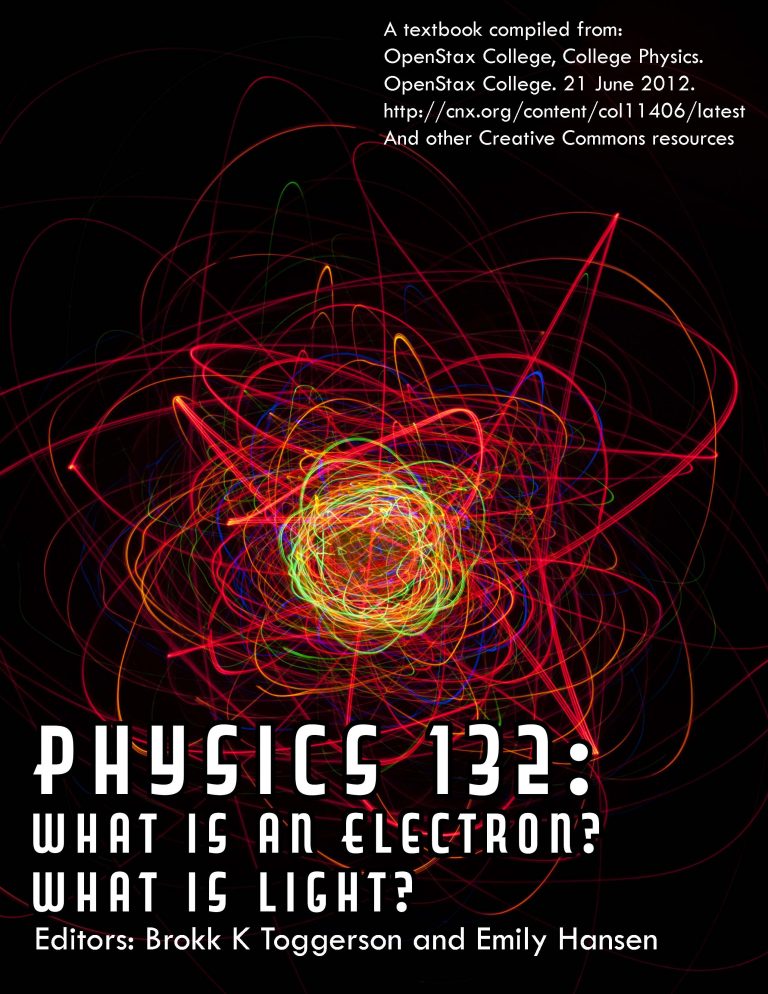
This textbook, initially used in the spring 2020 semester and developed in conjunction with physics undergraduate Emily Hansen (Class of 2020), is specifically designed to help students prepare for my Physics 132 class sessions. The material is, therefore, focused at a fairly introductory level. Some of the special features of this textbook include:

This lab manual was developed with Aidan Philbin a UMass Amherst physics undergraduate from the class of 2021. The manual was first used in the Fall 2020 semester and is based on the ideas presented in Holmes and Weiman's Introductory Physics Labs: We Can Do Better"[1]. The key takeaways are:
In short, labs are effective at teaching students to engage in the scientific process. The paper comments that students currently get most of their education in this area working in labs. However, not all students have/can afford that opportunity. These skills should be [art of the standard curriculum. Given that introductory chemistry and biology labs have specific skills they must teach (like titration) that are needed in the next lab of the sequence, I felt the physics lab was a great place for life-science majors to focus on these general skills.
Before further discussion, I want to clarify a point of terminology that myself and the UMass Director of Physics Teaching Laboratories, Dr. Paul Bourgeois, and I have developed: the distinction between a lab and an experiment. The experiment is the actual set of procedures and measurements that the students conduct. In this conceptualization, a lab in contrast is the set of goals and skills that the instructor wants the students to develop. This mental structure results in an interesting decoupling: there are theoretically many different experiments for a given lab. For example, a lab on t-tests could be served by any experiment where students measure the same quantity in two different ways.
If the focus is to be on understanding uncertainties and experimental design, the equipment used must be sufficiently simple: students cannot possibly be expected to untangle the uncertainties of a "black box" piece of equipment the inner workings of which they would require some extensive instruction to understand. Moreover, as a physics-for-life-science course, I feel it is not my responsibility to teach students about specific equipment; teaching about equipment is a job better suited to introductory biology and chemistry labs. These courses are better positioned to teach authentic skills. Based on these observations, the experiments in this manual use only easily understood and common equipment: rulers, stop watches, etc.
If the students are going to engage in authentic experimental design, they must have time to fail (without penalty) and revise. Therefore, in this sequence of labs, students get the chance to re-do many of the experiments. The same experiment will be used for two subsequent labs, giving the students opportunity to think critically about the sources of uncertainty and how to potentially improve their procedures. Moreover, there is never penalty on getting a "wrong" answer. As long as students understand the uncertainties and can provide a reasonable justification for the errors, that is all that matters.
Currently the series of labs are (each lab meets for two hours on two consecutive weeks):
[1] Holmes, Natasha G., and Carl E. Wieman. “Introductory Physics Labs: We Can Do Better.” Physics Today 71, no. 1 (January 1, 2018): 38–45. https://doi.org/10.1063/PT.3.3816.

This textbook, initially used in the Fall 2017 semester and developed in conjunction with physics undergraduate David Nguyen (Class of 2017), is specifically designed to help students prepare for the flipped nature of Physics 131. Given that students use this book to develop an understanding of the fundamentals, the content is of a rather introductory level. We do not want to overwhelm the student with irrelevant details. Some of the special features of this textbook include:

I have produced a series of 3-D models to help students visualize some of the concepts in physics. These models can either be viewed online or printed. For several models, I have printed a classroom set for use at University of Massachusetts Amherst. These models are designed with Universal Design for Learning (UDL) principles in mind. For example, the arrow tips are unique: cones are forces, square pyramids are magnetic fields, and hemispheres are currents. These unique arrow tips allow for students with visual impairments to quickly and easily identify different quantities tactilely.
Two models are specifically designed for students with visual impairment. A series of pegs on a board, in conjunction with some string, allows students with visual impairment to draw ray diagrams.

I am the primary blogger at the University of Massachusetts Amherst Physics Education Group blog. I post at least once a month. A few of my common themes are:
Publications from the ATLAS experiment include only those to which I provided a significant contribution. For a full list see here.
Quality IPLS courses require examples which are biologically and/or chemically authentic. Creating such examples can be challenging for faculty not trained in these disciplines. What are some tools for creating such examples? How can such authentic examples motivate the topics to include in such a course? How can such examples be used to provide overarching themes to IPLS courses? These questions will be explored in the context of a large-enrollment (300-600 student) course taught both in a lecture hall and in a synchronous-optional online course at University of Massachusetts, Amherst.
Contributed a short video on Intentionally Creating Diverse Teams.
Included were some student comments. The producers of the video then made a nice "thank you" video from some of my students.
What are some ways to conclude your semester and leave students with a lasting and positive impression? Brokk Toggerson, Lecturer in Physics, teaches large introductory courses of 300+ students. By using digital technology tools and visuals, he thoughtfully ends his courses each semester by returning to his essential questions and prompting student reflection. Read more about the design and impact of Brokk’s approach, including a short video in which he talks about his strategies and tips.
Graduate students face several important transitions: becoming a researcher, a teacher, and a colleague. These transitions require specific skills: reading research, giving presentations, and navigating issues of diversity in the workplace. At UMass-Amherst incoming physics Ph.D. students begin developing these skills in a dedicated seminar through the lens of TA training. Students read journal articles about physics education in Perusall: simultaneously honing students’ ability to read research articles and introducing them to teaching best-practices.
Introductory physics for life science (IPLS) courses can vary wildly in sizes, pre-requisites, major distributions, and pedagogical frameworks. These variations mean some level of adaptation of found materials is almost always required. This talk will focus on the process of adapting materials from the IPLS Portal (and elsewhere) to a two-semester, algebra-based, studio-style IPLS sequence of large enrollment at University of Massachusetts Amherst. In this context, large enrollment means a single instructor, with some TA support, is responsible for two sections of 100 students each in the first semester, and for two sections of 250 students in the second. Therefore, scalability, while maintaining an active learning environment, is a key consideration. Other adaptations motivated by our large number of kinesiology majors, as well as differences arising from algebra- versus calculus-based courses will also be considered.
In a flipped classroom model, students are expected to master a base level of information before coming to class. Such a structure can result in not only more class time to explore more complex topics, but also a more equitable classroom. To achieve these goals, the level of knowledge students are expected to master must be appropriate. Moreover, quality materials and support, which focus solely on what is needed for preparation, must be available so that all students, regardless of prior experience, can come prepared for class. In order to ensure accessibility, these materials should be free or very low cost and conform to Universal Design for Learning principles. In this talk we present a free-and-open multi-modal textbook developed in Pressbooks for a second semester IPLS course at University of Massachusetts Amherst. Student mastery of the preparation is further developed through formative online assignments in the low-cost Edfinity homework system.
One important aspect of learning is through verbal interactions with teachers or teaching assistants (TAs), which requires significant effort and puts a heavy burden on teachers. Artificial intelligence has the potential to reduce their burden by automatically addressing the routine part of this interaction, which will free them up to focus on more important aspects of learning. We explore the use of automated question answering methods to power virtual TAs in online course discussion forums, which are heavily relied on during the COVID-19 pandemic as classes transition online. First, we focus on answering frequent and repetitive logistical questions and adopt a question answering framework that consists of two steps: retrieving relevant documents from a repository and extracting answers from retrieved documents. The document repository consists of course materials that contain information on course logistics, e.g., the syllabus, lecture slides, course emails, and prior discussion forum posts. This question answering framework can help virtual TAs decide whether a question is answerable and how to answer it. Second, we analyze the timing of student posts in discussion threads and develop a classifier to predict the timing of follow-up posts. This classifier can help virtual TAs decide whether to respond to a question and when to do so. We conduct experiments on data collected from an introductory physics course and discuss both the utility and limitations of our approach.
We present the impact on student self-efficacy of an introductory physics for life-science students course taught using a Team-Based Learning pedagogy. We measured self-efficacy using the validated quantitative Sources of Self-Efficacy in Science Courses - Physics, SOSESC-P, survey developed by Fencl and Scheel. Data were collected both at the beginning and end of the semester to evaluate the impact of shifts in individual self-efficacy. After describing the key features of the pedagogy, we find that the Team-Based Learning system at University of Massachusetts Amherst, results in significant improvements for she-identifying individuals from three of the four sources of self-efficacy identified by Bandura as well as in three of four investigated attributes of the course. We also investigated the predictive power of self-efficacy on individual student performance using logarithmic regression. For our course, the shift in self-efficacy between the beginning and end of the semester is more important that a student's pronouns in predicting attaining at least a B on individual assignments.
How can we apply lessons about how people actually learn from educational psychology and neurology to teaching physics effectively? The standard lecture is definitely the most familiar technique, but is it the most effective? Are there other things that we as instructors can do that would work better? How do we define "better?"
In this talk for the public, I explore some of the principles of effective teaching. While I am a physics teacher, and therefore speak within that context, most of these techniques can be applied to other disciplines as well. I then go on to explore the impacts of these techniques on the self-efficacy, or belief in one's ability to learn, for introductory physics for life-science students.
Many departments have few formalized opportunities for physics majors to explore education principles within physics departments. Moreover, teaching a 100-student course in a team-based format as in Michaelsen et al often requires significant in-classroom assistants. At UMass-Amherst, we have been developing a course to meet both of these needs. In our course, students engage with modern PER literature and get hands-on practical experience in a studio-style classroom under the mentorship of one of our department’s lecturers. Simultaneously, the students in this course provide the in-classroom support needed for the first semester of our introductory physics for life sciences course. We will present some of the key features of our course, in particular how course assignments both help the department achieve its teaching goals as well as allow students develop real-world products they can use in future job searches.
We present the current status of an effort at UMass, Amherst to transition the first semester of our large IPLS course to a team-based learning format following Michaelsen et al while simultaneously adjusting the topics and skills covered to apply to our population. We will present our motivations for the transition, key features of our course’s structure, and an overview of the largest departures in content from a typical algebra-based introductory course. We will also discuss new developments towards a dedicated free and open-source textbook for our course based upon the OpenStax College Physics text.
Over the past years, we at UMass-Amherst have been transitioning six 100-student sections of a first-semester introductory physics for life science (IPLS) course into a team-based (TBL) model following Michaelsen et al. Here we present an overview of our first efforts to teach the second semester of the sequence in the same style. Due to institutional constraints, the second semester of the sequence has 300 students per section and is taught in a traditional lecture hall. A discussion of how we handled some of the logistical challenges of teaching in a TBL mode in this space will be touched upon along with a discussion of the particular IPLS features and some notes on future plans.
An overview of some of the various tools and technologies used in Physics 131 and 132. Improved and expanded from the January edition.
An overview of some of the various tools and technologies used in Physics 131 and 132.
An overview of some of the unanswered questions in physics today.
An overview of the effort to convert P131 to TBL.
Asked by MASSPRING (A student advocacy group) to participate in a panel to answer questions from students and faculty on my experiences with open resources.
An overview of efforts to use Twitter as a student response system in a large lecture-hall course. Presented to the Spring 2017 @Innovate Symposium.
As documented under my current projects, the Summer Pre-College program is a two-week intensive program for high-school students by which students are in residence at UMass and participate in 6 hours of intensive study per day.
These materials and the slides also provided on this page form a set
Please contact me if you plan to use these slides. I am happy to share them with attribution. I would also appreciate any feedback you may have.
As documented under my current projects, the Summer Pre-College program is a two-week intensive program for high-school students by which students are in residence at UMass and participate in 6 hours of intensive study per day.
These materials and the slides also provided on this page form a set.
Please contact me if you plan to use these slides. I am happy to share them with attribution. I would also appreciate any feedback you may have.
Written as a guide for PHYS 102 students at University of Arizona. A summary of work done at University of Minnesota on learning physics by problem solving. Provided the framework for collaborative problem solving activities to be conducted as part of and algebra-based introduction to mechanics at University of Arizona.
A search for the electroweak pair production of charged sleptons and weak gauginos decaying into final states with two leptons is performed using 4.7 fb-1 of proton-proton collision data at sqrt(s)=7 TeV recorded with the ATLAS experiment at the Large Hadron Collider. No significant excesses are observed with respect to the prediction from Standard Model processes. In the scenario of direct slepton production, if the sleptons decay directly into the lightest neutralino, left-handed slepton masses between 85 and 195 GeV are excluded at 95% confidence level for a 20 GeV neutralino. Chargino masses between 110 and 340 GeV are excluded in the scenario of direct production of wino-like chargino pairs decaying into the lightest neutralino via an intermediate on-shell charged slepton for a 10 GeV neutralino. The results are also interpreted in the framework of the phenomenological minimal supersymmetric Standard Model.
An overview of searches for direct gaugino production in dilepton channels at sqrt(s) = 7 TeV using the ATLAS detector.
A search for the electroweak production of gauginos decaying into two leptons and missing transverse momentum (MET) is presented using pp collisions at sqrt(s) = 7 TeV produced by the LHC and recorded by the ATLAS detector corresponding to an integrated luminosity of 4.7 fb^-1. Standard Model backgrounds are estimated using a combination of semi-data-driven techniques where possible, and Monte Carlo simulation. No significant excess in data with respect to the Standard Model prediction is observed in any of the four signal regions: opposite-sign dileptons with a jet veto and missing transverse energy, same-sign dileptons with a jet veto and MET, opposite-sign dileptons in association with jets, or a signal region requiring opposite sign dileptons and using kinematic properties of the event to remove top anti-top and WW backgrounds. In addition to model-independent limits, limits are set in both simplified models and in the context of the phenomenological Minimally Supersymmetric Standard Model. Using the simplified model paradigm, wino-based charginos, decaying through an intermediate on-shell slepton or sneutrino to a stable 10 GeV neutralino, are excluded for chargino masses between 110 and 340 GeV. For the case of associatively produced mass-degenerate charginos and neutralinos both decaying via on-shell sleptons or sneutrinos to stable 10 GeV neutralinos, the chargino and neutralino masses of 80-260 GeV are excluded.
An overview of searches for direct gaugino production and RPV SUSY in events with 2, 3 and 4+ leptons at sqrt(s) = 7 TeV using the ATLAS detector.
An overview of searches for direct gaugino production in events with 2, 3 and 4+ leptons at sqrt(s) = 7 TeV using the ATLAS detector.
Results of three searches are presented for the production of supersymmetric particles decaying into final states with missing transverse momentum and exactly two isolated leptons, e or mu. The analysis uses a data sample collected during the first half of 2011 that corresponds to a total integrated luminosity of 1 fb^-1 of sqrt{s} = 7 TeV proton-proton collisions recorded with the ATLAS detector at the Large Hadron Collider. Opposite-sign and same-sign dilepton events are separately studied, with no deviations from the Standard Model expectation observed. Additionally, in opposite- sign events, a search is made for an excess of same-flavour over different-flavour lepton pairs. Effective production cross sections in excess of 9.9 fb for opposite-sign events containing supersymmetric particles with missing transverse momentum greater than 250 GeV are excluded at 95% CL. For same-sign events containing supersymmetric particles with missing transverse momentum greater than 100 GeV, effective production cross sections in excess of 14.8 fb are excluded at 95% CL. The latter limit is interpreted in a simplified weak gaugino production model excluding chargino masses up to 200 GeV.
Results are presented of searches for the production of supersymmetric particles decaying into final states with missing transverse momentum and exactly two isolated leptons in sqrt(s)=7 TeV proton-proton collisions at the Large Hadron Collider. Search strategies requiring lepton pairs with identical sign or opposite sign electric charges are described. In a data sample corresponding to an integrated luminosity of 35 pb-1 collected with the ATLAS detector, no significant excesses are observed. Based on specific benchmark models, limits are placed on the squark mass between 450 and 690 GeV for squarks approximately degenerate in mass with gluinos, depending on the supersymmetric mass hierarchy considered.
A measurement of the production cross-section for top quark pairs (ttbar) in pp collisions at sqrt(s}=7 TeV is presented using data recorded with the ATLAS detector at the Large Hadron Collider. Events are selected in two different topologies: single lepton (electron or muon) with large missing transverse energy and at least four jets, and dilepton (e e, mu mu or e mu) with large missing transverse energy and at least two jets. In a data sample of 2.9 pb-1, 37 candidate events are observed in the single-lepton topology and 9 events in the dilepton topology. The corresponding expected backgrounds from non-ttbar Standard Model processes are estimated using data-driven methods and determined to be 12.2 +/- 3.9 events and 2.5 +/- 0.6 events, respectively. The kinematic properties of the selected events are consistent with SM ttbar production. The inclusive top quark pair production cross-section is measured to be $\sigma_ttbar=145 \pm 31 ^{+42}_{-27}$ pb where the first uncertainty is statistical and the second systematic. The measurement agrees with perturbative QCD calculations.
The Muon Spectrometer of the ATLAS detector at the LHC is designed to provide high quality stand-alone muon identification, momentum measurement and trigger capabilities with high pseudorapidity coverage. Precision tracking at the inner-most station in the high pseudorapidity regions, 2.0 < |eta| < 2.7, is performed by 16 four-layered Cathode Strip Chambers on each end-cap. These are multi-wire proportional chambers with segmented cathodes providing excellent spatial resolution and high counting rate capability. The second cathode of each layer is coarsely segmented, providing the transverse coordinate. The detector level performance of the system is presented. The installation and commissioning effort for the Cathode Strip Chambers is described. Finally, the in situ performance is briefly discussed.
Using a thin-gap liquid argon ionization chamber and Strontium-90 beta sources we have measured ionization currents over a wide range of gap potentials. These precision "HV plateau curves" advance the understanding of liquid argon sampling calorimeter signals, particularly at high ionization rates. The order of magnitude differences in the activities of the beta sources allow us to estimate where the ionization chamber is driven into the space-charge dominated regime.
Regardless of if you are a student, a faculty member interested in discussing teaching, or a business interested in consultation, I would be happy to talk to you. Please do not hesitate to contact me. I also have an open-door office policy: if the door is open, do not hesitate to come in and chat.
Here is a compilation of resources for my current students. If you have a question, please do not hesitate to contact me


I asked some friends and colleagues of mine who are all now physicists or engineers, "How do you study physics?" Here are their responses:
I would go to lecture and take detailed notes. After lecture I would begin working on the homework and do as much as possible on my own. Afterwards, I would contact a friend or two of mine and set up a homework session where we would go through our solutions. Sometimes in the course of trying our solutions to each other we would find a mistake in our work. If no one understood the problem, then we would work on it together. These were the problems where we probably learned the most; we would explain ideas to each other and explore the concepts involved. If we got stuck, we would go ask the instructor for help.
In preparing for exams, I would go through the text and combine my class notes and the text into an outline or map of the concepts. These outlines definitely found use later in making studying for the final exam much more efficient. After outlining, I would work practice problems. Usually these problems were done in a group, as I find explaining what I did to others to be very beneficial.
I did my best when I did lots of practice problems that provided different examples of using the same concepts. Using the same concepts in different ways to solve different problems helps to abolish the idea that you can just plug and chug without thinking about the real problem at hand.
Focus on concept based questions. I've found a lot of engineers get by on their math skills alone and couldn't answer the simplest of conceptual questions. I've also found drop outs who could have made great engineers, but they got tripped up trying to understand and didn't get the emphasis on understanding the material they needed since it was all about solving the problem.
Also, make sure your algebra skills are like second nature. That way you are not thinking about algebra, you are focused on the concepts and any new mathematics. I thought I understood algebra, I got a good grade in it, but I had trouble doing it at the level needed at first.
Lots and lots of practice problems, even ones I've done before. Not just doing them, either, but making sure I understand why I'm doing what I'm doing. Also, I usually go through my notes/the text book and summarize key points, relationships, and equations. For the equations, I make sure that I know what they do and how to use them (practice problems help with this step). It's a long process that requires at least two days, sometimes more depending on what I'm studying for and how much material there is.
Understand the difference between the mathematical framework and the physical model. What are the physical concepts and how is it written down mathematically? Physics and mathematics is so intertwined that it can be hard to see what is what. Learn how to read formulas; what does each symbol stand for and what is it purpose? Learn how to write formulas: "If I want to express this physical concept mathematically, how would I do it?" Always read the units in an equation, so that you know what the core quantity is flowing between all the separate components of the equation. To know what is flowing between everything is essential for the understanding of an equation. To know what is flowing is also to know what is conserved. In the end we are all plumbers.